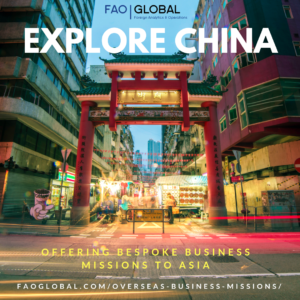
This original article was published via Linkedin by Brandon Hughes. See original here.
A Declining Environment for U.S. Business Operations
According to a recent survey by the American Chamber of Commerce in China, nearly half of all U.S. companies have reported some form of retaliatory measures towards their business operations in China due to the continued U.S.-China trade war and subsequent rounds of tariffs. Profit margins continue to decrease, and companies are now scrambling to find alternative solutions to their previous China focused strategies. Small parts manufacturers are looking South to Vietnam, Thailand, Malaysia, and Indonesia to be a temporary stop gap. With the most recent breakdown of trade talks, the indicators lean towards a protracted trade war with no tariff reductions in sight.
China’s Xi Jinping prepares for the “Long March”
On May 21, 2019, China’s President Xi Jinping told Chinese citizens to prepare for the “long march,” a clear reference to the 1940’s civil war between the nationalist government and Chinese communists. Essentially, this reference was the first major indicator of the President proactively managing expectations and mentally preparing citizens for the economic downturn that is likely to come should this trade war continue. By framing it in a nationalist light, this reference asks Chinese citizens to share the load of the impact.
U.S. President Trump is Tweeting Again
Over the last 10 days, President Trump has begun tweeting about U.S.-China trade disputes. This is another clear indication that there are serious divergences between the two negotiations teams. The accusatory nature against China is a clear sign talks have hit a standstill. By making the tweets targeted towards the talks, President Trump is likely feeling that the talks have hit a wall and is using public shaming to force China’s hand. Unfortunately, domestic Chinese citizens do not have access to twitter and many other U.S. public forums, so the message goes largely unheeded in China.
U.S. & China Businesses Seek Alternatives
Since the beginning of May, our team at FAO Global has seen an increase in both concern and interest of U.S. businesses to pursue partnerships, suppliers, and supply chain solutions outside of China. Many are looking regionally to Southeast Asia, which provides alternative options (depending on the industry). We also see Chinese firms looking past the U.S. to Latin America and Canada in order to avoid the perceived anti-China business sentiment in the United States. The impact of tariffs demand companies refines their continuity plans and seek alternatives to direct U.S.-China trade. Most companies don’t operate with 25% profit margins causing may components and finished products to not be profitable.
Conclusion
The trade war is starting to restrict global trade flow which is likely to have longer impacts on economic growth than realized. While the U.S. enjoys a low unemployment rate now, prolonged restrictions on trade may have negative trickle-down consequences that could ultimately lead to a larger trade imbalance and higher unemployment. A settlement may take another 6 months to come to fruition and it may not be what is expected. It is likely that the tariff increases are here to stay until the election cycle starts up again. Expect to see a reduction of tariffs and overtures come election season as President Trump looks to maximize positive public relations leading up to the ballot.
About the Author
Brandon Hughes is a U.S. businessman and China Strategist with over a decade of experience focused on emerging markets. He is currently the Founder/ CEO, and Principle consultant at FAO Global which provides bespoke data analysis and management consulting services to firms investing & operating in China & emerging markets.
Brandon brings over a decade of experience working in international markets from the public, non-profit, and private sectors. He holds an L.L.M. from Tsinghua University (Asia#1) and a B.S. in International Business from UNLV. He is currently completing a joint MBA through Columbia University, London Business School, & Hong Kong University.

